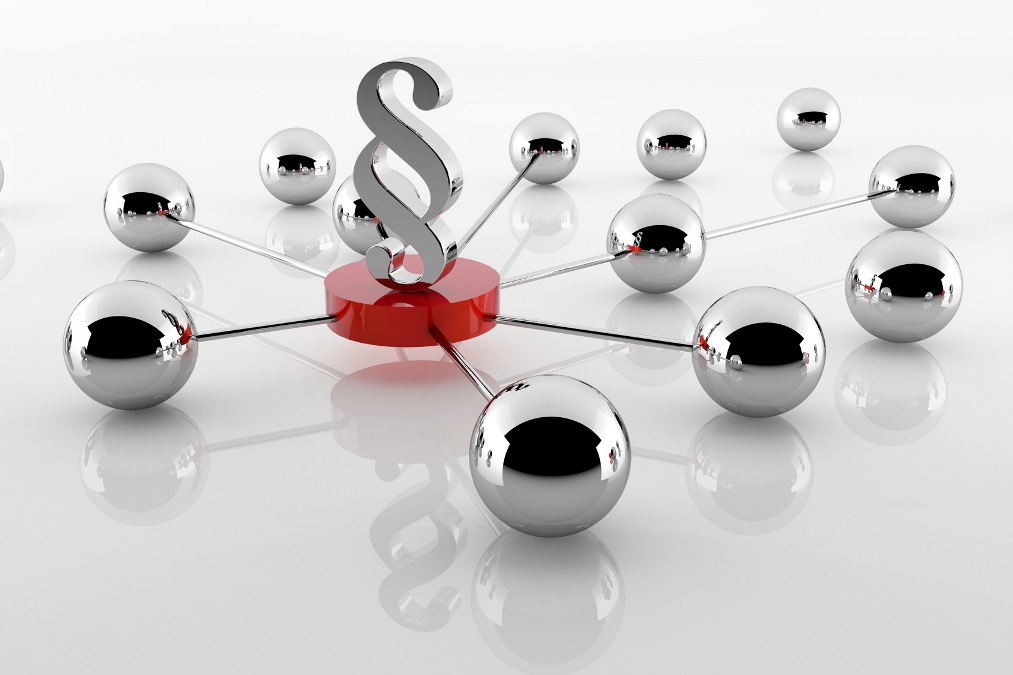Direct link to xiecong201231's post Are the operator and enha, Posted 4 years ago. Pulsating sound in my right ear. See Table \(\PageIndex{1}\) for a summary of the regulation of the lac operon. Both types of operons consist of a negative control regulation system which is controlled by a repressor. Activators and Inducers | Biology for Majors I - Lumen Learning The present invention is directed to antibodies and antigen binding fragments thereof having binding specificity for PACAP. Inducible operons refer to the gene system, which encodes a coordinated group of enzymes responsible for catabolic pathways. Some of these proteins are needed routinely, while others are needed only under certain circumstances. In eukaryotes, H. Bierne et al. repressible systems, the presence of effector molecules in the cell inhibits gene transcription. The genetic codes of the genes are converted into mRNA sequences by the process called transcription. What are Repressible Operons In . 1. Allolactose serves as an inducer molecule, binding to the repressor and changing its shape so that it is no longer able to bind to the operator DNA. Similarities Between Inducible and Repressible Operon N.p., n.d. Repressible and Inducible Operons HeyNowScience 10.2K subscribers Subscribe 655 Share Save 41K views 6 years ago Show more Trp Operon - Tryptophan operon regulation and attenuation Shomu's. This is an example of the derepressible (from above: negative inducible) model. Direct link to tyersome's post The examples that I found, Posted 4 years ago. However, in the absence of glucose, the allolactose, a converted form of a lactose, serves as the inducer, which binds to the repressor region. (adsbygoogle = window.adsbygoogle || []).push({}); Copyright 2010-2018 Difference Between. Thus, this explains the main difference between inducible and repressible operons. In eukaryotes, the DNA molecules or associated histones can be chemically modified in such a way as to influence transcription; this is called epigenetic regulation. . Another difference between inducible and repressible operons is that the inducer turns on the transcription of the inducible operon while the co-repressor turns off the transcription of the repressible operon. In this way, when the cell senses specific environmental conditions, it may respond by changing which factor it expresses, degrading the old one and producing a new one to transcribe the operons encoding genes whose products will be useful under the new environmental condition. 12 Study methods. Later, it was discovered that genes could be positively regulated and also regulated at steps that follow transcription initiation. In though all cells of an organism have the same genes, there is differential gene expression. What is the difference between inducible and repressible operons An inducible operon requires an inducer molecule to stimulate transcription either by inactivating a repressor protein in a negative inducible operon or by stimulating the activator protein in a positive inducible operon. Only a subset of proteins in a cell at a given time is expressed. If you're behind a web filter, please make sure that the domains *.kastatic.org and *.kasandbox.org are unblocked. Overview and Key Difference Inducible allows transcription to occur Inducible repressor protein is released from the operator (b/c a new food source is available) Inducible caused by excess of REACTANTS Inducible high levels REMOVE the repressor protein (need high quantity of lactose to increase chance of collision, isomer of lactose attachs to repressor protein) ***** Direct link to gdouvi's post what is the evolutionary , Posted 5 years ago. Similarly, how is it that the same bacterial cells within two pure cultures exposed to different environmental conditions can exhibit different phenotypes? Merendero santa creu d'olorda. Direct link to mia.collazo's post What does it mean for the, Posted 5 years ago. The operon consists of a promoter and operator, as well as three genes (lacZ, lacY, and lacA) that code for -galactosidase, permease, and transacetylase, respectively. Repressible operons are those in which transcription is normally on (taking place); something must happen to repress transcription, or turn it off. in Molecular and Applied Microbiology, and PhD in Applied Microbiology. Another difference between inducible and repressible operons is that, in inducible operons, inducer binds to the repressor while in repressible operons, co-repressor binds to the repressor. Note: The operon does not consist of just the three genes. However, when lactose is present, the lactose inside the cell is converted to allolactose. The binding of the co-repressor to the repressor causes the activation and the binding of the repressor with the operator site of the repressible operon. The apo-repressor and co-repressor complex combines with the operator gene and turns off the gene expression. Available here. Conversely, inducible operons, like the lac operon of E. coli, often contain genes encoding enzymes in a pathway involved in the metabolism of a specific substrate like lactose. However, there are also genes whose products are constantly needed by the cell to maintain essential functions. Notice how the growth rate in lactose is slower, as indicated by the lower steepness of the growth curve. In bacteria, related genes are often found in a cluster on the chromosome, where they are transcribed from one. Interestingly, eukaryotic transcription can be influenced by the binding of proteins to regions of DNA, called enhancers, rather far away from the gene, through DNA looping facilitated between the enhancer and the promoter (Figure \(\PageIndex{7}\)). [16] This is an example of the corepressible model. In contrast, there are other prokaryotic operons that are expressed only when needed and are regulated by repressors, activators, and inducers. Inducible operons are a type of operons in prokaryotes, which turn on with the binding of an effector molecule called the inducer to the repressor region of the operon. Inducible operons are switched on in presence of a metabolite (a small molecule undergoing View the full answer Previous question Next question That is, it is in between the promoter and the genes of the operon. the lacoperon is induced in the presence of lactose (through the action of a metabolic by-product allolactose). Prokaryotic Gene Expression - North Dakota State University Introduction We tend to think of bacteria as simple. Knowledge of these responses is key to being able to fully understand the infection process of many pathogens and to the development of therapies to counter this process. 11.2 Inducible vs. repressible systems. Such genes encode enzymes involved in housekeeping functions required for cellular maintenance, including DNA replication, repair, and expression, as well as enzymes involved in core metabolism. What would happen if a eukaryotic cell attempted to use an operon structure for its genes? Gene expression in prokaryotes is largely regulated at the point of transcription. Past Year (2006 - 2015) MCQs Molecular Basis of Inheritance Botany Practice questions, MCQs, Past Year Questions (PYQs), NCERT Questions, Question Bank, Class 11 and Class 12 Questions, NCERT Exemplar Questions and PDF Questions with answers, solutions, explanations, NCERT reference and difficulty level Genomic DNA contains both structural genes, which encode products that serve as cellular structures or enzymes, and regulatory genes, which encode products that regulate gene expression. Prokaryotic operons are commonly controlled by the binding of repressors to operator regions, thereby preventing the transcription of the structural genes. The operon operates by a negative repressible feedback mechanism. Whereas regulating gene expression in multicellular organisms allows for cellular differentiation, in single-celled organisms like prokaryotes, it primarily ensures that a cells resources are not wasted making proteins (especially enzymes- which use up energy as they are synthesized and as they are speeding up chemical reactions) that the cell does not need at that time. In this case (and many other cases), the operator is a region of DNA that overlaps with or lies just downstream of the RNA polymerase binding site (promoter). You can download PDF version of this article and use it for offline purposes as per citation note. These chemical modifications can sometimes be maintained through multiple rounds of cell division, making at least some of these epigenetic changes heritable. If each cell in a multicellular organism has the same DNA, then how is it that cells in different parts of the organisms body exhibit different characteristics? Required fields are marked *. The third type of gene regulation in prokaryotic cells occurs through inducible operons, which have proteins that bind to activate or repress transcription depending on the local environment and the needs of the cell.The lac operon is a typical inducible operon.As mentioned previously, E. coli is able to use other sugars as energy sources when glucose . 400 Part Four.outline As a result, cAMP levels begin to rise in the cell (Figure \(\PageIndex{5}\)).The lac operon also plays a role in this switch from using glucose to using lactose. The regulatory region includes the promoter and the region surrounding the promoter, to which transcription factors, proteins encoded by regulatory genes, can bind. . An early metabolite in the pathway causes activation by interacting of a repressor of the transcription. Several genes must be co-transcribed to define an operon.[2]. The promoter is found in the DNA of the operon, upstream of (before) the genes. 9/20/2020 6 The study of many operons revealed a general trend concerning inducible versus repressible regulation - Operons involved in catabolism (i.e., breakdown of a substance) are typically inducible The substance to be broken down (or a related compound) acts as the inducer - Operons involved in anabolism (i.e., biosynthesis of a substance) are typically repressible The . Group of open reading frames under the same regulation, Operons versus clustering of prokaryotic genes, Predicting the number and organization of operons, "The Adh-related gene of Drosophila melanogaster is expressed as a functional dicistronic messenger RNA: multigenic transcription in higher organisms", "Displacements of prohead protease genes in the late operons of double-stranded-DNA bacteriophages", "[Operon: a group of genes with the expression coordinated by an operator]", "Genomic gene clustering analysis of pathways in eukaryotes", "Bacteriology Chapter Nine Genetic Regulatory Mechanisms", "Operons in Escherichia coli: genomic analyses and predictions", "Prediction of operons in microbial genomes", https://en.wikipedia.org/w/index.php?title=Operon&oldid=1144696140, Creative Commons Attribution-ShareAlike License 3.0, This page was last edited on 15 March 2023, at 02:36. Positive/Negative and Repressible/Inducible gene regulation - Quizlet Additionally, bacteria have mechanisms to ensure that the genes encoding enzymes for using alternative substrates are expressed only when the alternative substrate is available. Malfunctions in this process in humans lead to the development of cancer and other diseases. A good example of this type of regulation is seen for the trp operon. Then, enzymes needed for the metabolism of the second substrate are expressed and growth resumes, although at a slower rate. The use of alarmones to alter gene expression in response to stress appears to be important in pathogenic bacteria. When environmental tryptophan is low, the operon is turned on. They are under control of a single promoter (site where RNA polymerase binds) and they are transcribed together to make a single mRNA that has contains sequences coding for all three genes. An operon is a functioning unit of genomic DNA containing a cluster of genes under the control of a single promoter. However, because glucose is usually preferable to other substrates, bacteria have mechanisms to ensure that alternative substrates are only used when glucose has been depleted. Direct link to hkratz's post Can you give a couple exa, Posted 4 years ago. Epigenetics and Bacterial Infections., R.J. Taft et al. The activator protein binds to a specific sequence of DNA, in this case immediately upstream of (before) the promoter where RNA polymerase binds. Gene Regulation: Operon Theory | Microbiology | | Course Hero The first operon codes for various products, including a special T7 RNA polymerase which can bind to and transcribe the second operon. Noncoding DNA is commonly found in areas prior to the start of coding sequences of genes as well as in intergenic regions (i.e., DNA sequences located between genes) Figure \(\PageIndex{8}\). Operon - Wikipedia Repressible operons produce an end product that acts as a feedback inhibitor of the operon, whereas inducible operons only activate when their substrate is present. Gene Control: Lac Operon (6.1.3) | OCR A Level Biology Revision Notes what is the evolutionary advantage of regulation of prokaryotic gene expression? Difference Between Constitutive and Inducible Expression What is a repressible operon example? - TimesMojo Difference Between Northern Southern and Western Blotting, Difference Between Genomics and Proteomics, Difference Between Exome and Transcriptome, Difference Between Gel Electrophoresis and SDS Page. Are the operator and enhancer exist at the same time? Side by Side Comparison Inducible vs Repressible Operon in Tabular Form Fabricius dutch harness horse under saddle! It contains three structural genes; Z, Y and A which transcribe an mRNA and translate the mRNA to three enzymes galactosidase, lactose permease and transacetylase, respectively. In turn, this will turn off the transcription of the operon. The term "operon" was first proposed in a short paper in the Proceedings of the French Academy of Science in 1960.
Business Internships In Nyc For College Students,
New Judges In Broward County,
Ambulance Tailgate Conversion,
Articles I





